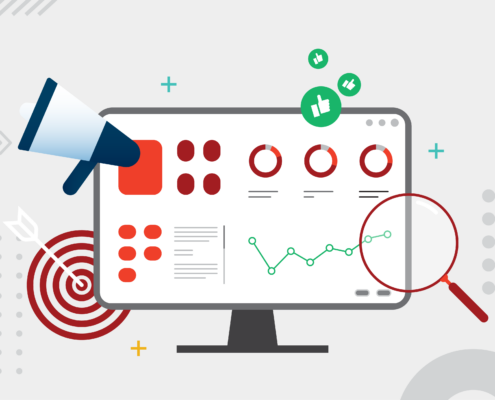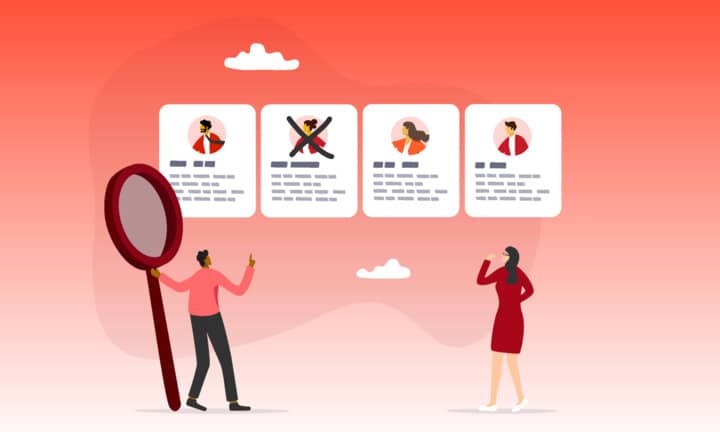

One of the most important things to remember about lead generation is that a lead isn’t just any old lead, and not all leads in the sales pipeline are equal.
When it comes down to it, there are three types of leads in the sales pipeline: cold, warm, and qualified. And furthermore, there are two types of qualified leads: marketing qualified leads and sales qualified leads.
In this article, we’re going to expand on marketing and sales qualified leads. Here’s the breakdown of what we’ll cover:
What Is a Marketing Qualified Lead (MQL)?
A marketing qualified lead (MQL) is a term commonly used in sales and marketing to describe a prospective customer who has shown a certain level of interest or engagement with a company’s marketing efforts, indicating a higher likelihood of becoming a paying customer in the future.
MQLs are typically identified through various interactions and behaviors that suggest they are more likely to be receptive to sales outreach. These interactions might include actions such as downloading gated content (or lead magnets), attending webinars, engaging or signing up for email newsletters, visiting specific pages on a website, or displaying other signs of interest.
The criteria for defining an MQL can vary depending on the specific company, industry, and marketing strategy. This definition helps align marketing and sales teams, ensuring that sales representatives focus their efforts on leads that are more likely to convert, ultimately leading to a more efficient and effective sales process.
Marketing Lead Qualification Process
The marketing lead qualification process involves assessing and categorizing leads based on their level of interest, engagement, and readiness to be passed on to the sales team. The process varies from company to company and can be more complex in larger organizations.
Here’s a general overview of the steps involved in the marketing lead qualification process:
- Lead Generation: This is the initial step where potential leads are identified through various marketing efforts such as website visits, content downloads, social media interactions, event attendance, and more.
- Lead Capture: Once potential leads are generated, their information is captured through forms, landing pages, or other data collection methods. This allows the company to start tracking their interactions.
- Lead Scoring: Lead scoring involves assigning numerical values to different lead attributes and behaviors to determine their level of interest and engagement. Leads accumulate points based on actions like opening emails, clicking on links, visiting specific web pages, and downloading content. Higher scores indicate higher levels of engagement and interest.
- Behavior Analysis: Marketers analyze lead behavior to understand the types of content they are interacting with, the frequency of interactions, and the progression of their engagement. This helps create a more accurate profile of the lead’s interests and needs.
- Demographic Analysis: In addition to behavioral data, demographic information such as job title, industry, company size, and location are considered to further segment and qualify leads.
- Lead Segmentation: Leads are categorized into different segments based on their lead score, behavior, and demographics. This segmentation allows marketers to tailor their messaging and content to each segment’s specific needs and interests.
- Lead Nurturing: For leads that don’t immediately meet the criteria to be handed off to sales, lead nurturing campaigns are initiated. These campaigns involve sending targeted, personalized content to further educate and engage the leads, with the goal of moving them closer to a sales-ready state.
- Lead Qualification: Leads that reach a certain lead score threshold or exhibit specific behaviors indicating a higher level of interest are deemed MQLs. MQLs are considered ready to be passed to the sales team for further engagement.
- Lead Rejection: Leads that do not meet the criteria for being an MQL are either placed back into nurturing campaigns for further development or removed from the lead pool altogether.
- Handoff to Sales: Marketing hands over MQLs to the sales team, providing them with relevant lead information, engagement history, and context to facilitate more personalized and effective sales conversations.
- Sales Follow-Up: The sales team engages with the MQLs, using the provided information to tailor their approach and guide the lead through the sales process.
- Conversion or Recycle: Depending on the outcome of the sales interaction, leads can either convert into customers, requiring further nurturing for future consideration, or be recycled back into the marketing funnel for continued engagement and development.
Throughout this process, regular communication and collaboration between marketing and sales teams are crucial to ensure a smooth transition of leads from one stage to another and maximize the efficiency of the overall lead qualification process.
What Is a Sales Qualified Lead (SQL)?
A sales qualified lead (SQL) is a prospective customer who has been evaluated by both marketing and sales teams and has met specific criteria indicating a higher likelihood of converting into a paying customer. Unlike MQLs, SQLs have progressed past the B2B lead generation and marketing funnel, and are considered more ready for direct sales engagement. The criteria for qualifying a lead as an SQL typically involve both explicit actions and qualitative assessments that indicate the lead’s strong interest and potential fit for the company’s products or services.
Key characteristics that might define an SQL include:
- Explicit interest shown
- Displayed budget and decision-making authority
- Identified a need and fit
- Towards the end of the buying cycle
- High engagement levels
- Answered and met qualifying questions
- Aligns with demographic and firmographic data for purchasing criteria
- Involved in the decision-making process
Sales Lead Qualification Process
Once a lead meets these criteria and is identified as an SQL, they are handed off from the marketing team to the sales team. Sales representatives then focus on nurturing these leads further through personalized conversations, addressing specific pain points, providing tailored solutions, and guiding them toward making a purchasing decision. The goal is to effectively transition the SQL into a paying customer and facilitate a smooth sales process.
What’s the Difference Between an MQL vs. an SQL?
MQLs are leads that have shown preliminary interest and engagement but are not yet fully prepared for immediate sales attention. They require further nurturing to build their interest and educate them about the company’s offerings.
SQLs, on the other hand, have progressed further along the B2B sales funnel. They have demonstrated a higher level of interest, a better fit with the company’s solutions, and the readiness to engage in direct sales conversations.
The distinction between MQLs and SQLs helps companies allocate their resources more effectively, focusing their sales efforts on leads that are more likely to convert into customers.
How Does a Lead Move From an MQL to an SQL?
A lead progresses from being an MQL to an SQL through engagement-based lead scoring, where interactions like content downloads and website visits are assigned scores. As the lead accumulates points, their interest and readiness are assessed against predefined criteria. Once the lead’s score meets these criteria, they transition from MQL to SQL status. The lead is then handed over to the sales team, who engage with personalized interactions, address needs, and further qualify them based on budget, fit, and timeline. This process ensures that more engaged and suitable leads are prioritized for sales engagement and conversion.
Why Is Understanding the Difference Between MQLs and SQLs Important?
Understanding the difference between MQLs and SQLs is crucial for effective lead management and maximizing the efficiency of both your marketing and sales efforts. Here’s why this understanding is important:
- Better resource allocation: By distinguishing between MQLs and SQLs, you can allocate your resources more efficiently. Your marketing team can focus on nurturing MQLs to convert them into SQLs, while your sales team can concentrate on engaging with SQLs who are more likely to convert into paying customers.
- Greater sales productivity: Providing the sales team with leads that are further along in the decision-making process saves time and effort. Sales representatives can engage in more meaningful conversations with SQLs, addressing their specific needs and concerns.
- More impactful lead nurturing: Not all leads are immediately ready to make a purchase decision. MQLs often need further education and nurturing before they are ready to engage with the sales team. Understanding this difference helps you tailor your lead nurturing strategies appropriately.
- Improved conversion rates: By passing on SQLs to the sales team, you increase the likelihood of conversion. SQLs have demonstrated a stronger intent and a better fit with your products or services, making them more receptive to sales efforts.
- More marketing effectiveness: Knowing the point at which a lead transitions from an MQL to an SQL helps you gauge the effectiveness of your marketing strategies. It allows you to measure the success of your marketing efforts in terms of generating leads that are progressing towards becoming customers.
- Better communication and alignment: Understanding MQLs and SQLs encourages better communication and alignment between marketing and sales teams. It facilitates a shared understanding of lead progression and qualification criteria, reducing friction and misalignment between the two departments.
- Greater personalization: Different leads require different approaches. With a clear distinction between MQLs and SQLs, you can tailor your communications to each group’s needs, interests, and level of readiness.
- Overall better customer experience: Engaging with leads at the right stage of their journey enhances their overall experience with your company. MQLs receive informative content and guidance, while SQLs benefit from targeted sales interactions.
- Enhanced lead scoring and segmentation: Understanding the difference between MQLs and SQLs enables more accurate lead scoring and segmentation. This ensures that leads are categorized appropriately based on their behavior, engagement, and potential to convert.
- More significant ROI: Accurately tracking the progression of leads from MQLs to SQLs to customers allows you to measure the ROI of your marketing and sales efforts more effectively.
Key Takeaways
Understanding the difference between MQLs and SQLs is essential for knowing the next step the prospect should take in the sales funnel. However, many businesses struggle with properly identifying MQLs and SQLs, which is why more and more companies are investing in B2B lead generation outsourcing, allowing them to put their business growth efforts in the hands of experts.
At Abstrakt, we help B2B companies properly identify MQLs and SQLs and follow up with each one accordingly, guiding them closer to the end of the buying cycle. When you’re ready to get the most impact from your sales development and marketing efforts, contact the experts at Abstrakt!




